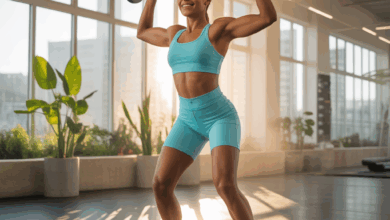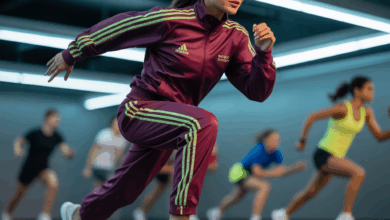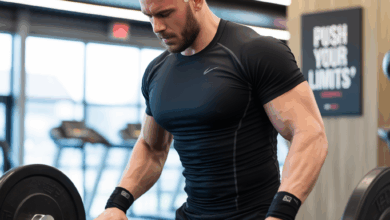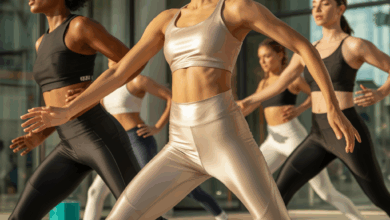Can I Workout in Crocs? Safe Tips, Workouts, and Smart Alternatives
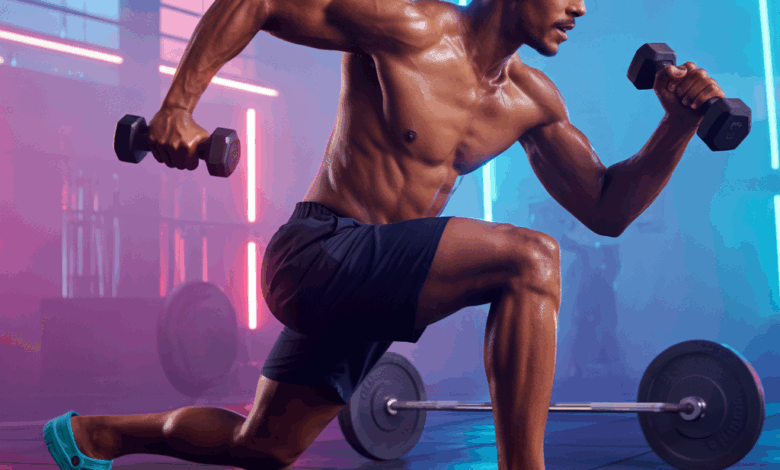
Ever walked into a gym and caught someone doing lunges in Crocs and wondered, “Can I workout in Crocs too?” You’re not alone. Whether you grabbed them for comfort, forgot your trainers, or love the casual style, Crocs are everywhere — and it’s tempting to use them for a quick workout. Let’s break down when it’s reasonable, when it’s risky, and how to adapt your routine so your feet and performance stay safe.
What happens to your feet when you exercise in Crocs?
Crocs are lightweight and comfortable, with a cushioned foam sole. That makes them fine for short walks or quick errands, but exercising places different demands on your feet: stability, grip, and control. Crocs typically lack the structured arch support, firm heel counter, and traction that athletic shoes provide. That can increase the risk of slips, ankle twists, poor force transfer during lifts, and general foot fatigue in higher-intensity sessions.
Key limitations to know
- Poor lateral stability — not ideal for side-to-side moves.
- Compressible sole — reduced force transfer for heavy lifts.
- Open ventilation and strap designs — possible foot slippage.
- Limited traction — risky on slick gym floors or wet surfaces.
Can I workout in Crocs? — When it’s okay and when it’s not
Short answer: sometimes. The full answer depends on the type of workout.
Safe workouts in Crocs
- Gentle walking or light hikes on flat, dry terrain.
- Low-impact bodyweight circuits (slow, controlled movements).
- Stationary cycling if the foot stays securely on the pedal.
- Water-based activities where water shoes are otherwise appropriate.
Workouts to avoid in Crocs
- Running, sprinting, or agility drills.
- Plyometrics and high-impact jumps (box jumps, burpees).
- Heavy weightlifting, especially deadlifts and squats requiring stable footbed.
- Sports with quick lateral movement (basketball, tennis).
Practical tips to workout safely if you only have Crocs
If you find yourself in Crocs at the gym, don’t panic. Use these practical strategies to lower injury risk:
- Choose a closed-back Croc or fasten the heel strap to reduce slipping.
- Stick to low-impact exercises and avoid lateral or explosive moves.
- Test traction and stability on a non-slip surface before starting.
- Use lighter loads and slower tempos to maintain control.
- Consider short, single-purpose sessions like a 20–30 minute walk or a mobility routine.
Sample 20-minute Crocs-safe workout
Try this quick routine if trainers aren’t available — all moves are low-impact and controlled.
- 5-minute brisk walk or easy cycle to warm up.
- 3 rounds: 10 slow air squats (hip-width), 8 standing rows with light band or dumbbell, 12 glute bridges.
- 2 rounds: 30 seconds farmer’s carry with light weight (watch your grip), 30 seconds standing core twists.
- 5-minute cool-down: calf and hamstring stretches; ankle mobility drills.
Alternatives and long-term advice
If you plan to exercise regularly, investing in a proper pair of athletic shoes is one of the best moves you can make. Here’s what to consider:
- Cross-trainers for mixed workouts and some lateral movement.
- Running shoes for sustained jogging or treadmill sessions.
- Flat-soled or lifting shoes for heavy strength training.
Also focus on foot strength and mobility: toe curls, single-leg balance drills, and calf raises build resilience so your feet cope better in a variety of shoes.
Real-world examples: What trainers see at the gym
As a fitness coach, I’ve seen folks use Crocs for quick warm-ups, shuttle runs around a pool, or to get from their car to a class. In one instance, a client used Crocs for a light mobility class and was fine. Another tried deadlifts in Crocs and felt unstable — we switched to flat-soled shoes and improved form and confidence instantly. The takeaway: Crocs aren’t universally unsafe, but they’re not a one-size-fits-all workout shoe.
Healthy lifestyle tips to protect your feet
- Rotate shoes — alternate casual and athletic footwear to reduce wear and stress.
- Wear moisture-wicking socks to improve grip and reduce blisters.
- Schedule regular foot mobility and strengthening sessions (5–10 minutes, 2–3x per week).
- Replace shoes when midsole cushioning or tread is worn out.
Frequently Asked Questions
Yes, short, casual walks are generally fine in Crocs, especially on even, dry paths. For long-distance walking or hikes with uneven terrain, choose supportive walking shoes to prevent fatigue and ankle instability.
Light lifting with controlled tempo may be acceptable, but avoid heavy squats, deadlifts, or explosive lifting. Crocs’ compressible sole reduces force transfer and stability — flat, firm-soled shoes are preferable for heavy resistance training.
Crocs are water-friendly and can be useful around pools or for light water-based activities. Make sure the surface isn’t slippery and that the strap is secure to prevent losing the shoe in wet conditions.
Final thoughts — can i workout in crocs?
So, can i workout in Crocs? Yes — but only for very specific, low-impact sessions and with caution. Crocs are comfortable and convenient, yet they lack the stability and performance features of proper athletic shoes. If you exercise regularly, treat Crocs as an occasional option and invest in purpose-built footwear for higher-intensity or heavy-load workouts.
Ready to upgrade your routine? Try a few trainer-approved alternatives and check out our workout routines for shoe-appropriate sessions, browse healthy meal ideas in our nutrition guides, and explore recovery strategies on our wellness tips page. If you’re unsure what footwear suits your routine, drop a comment or book a quick consult — your feet and performance will thank you.

